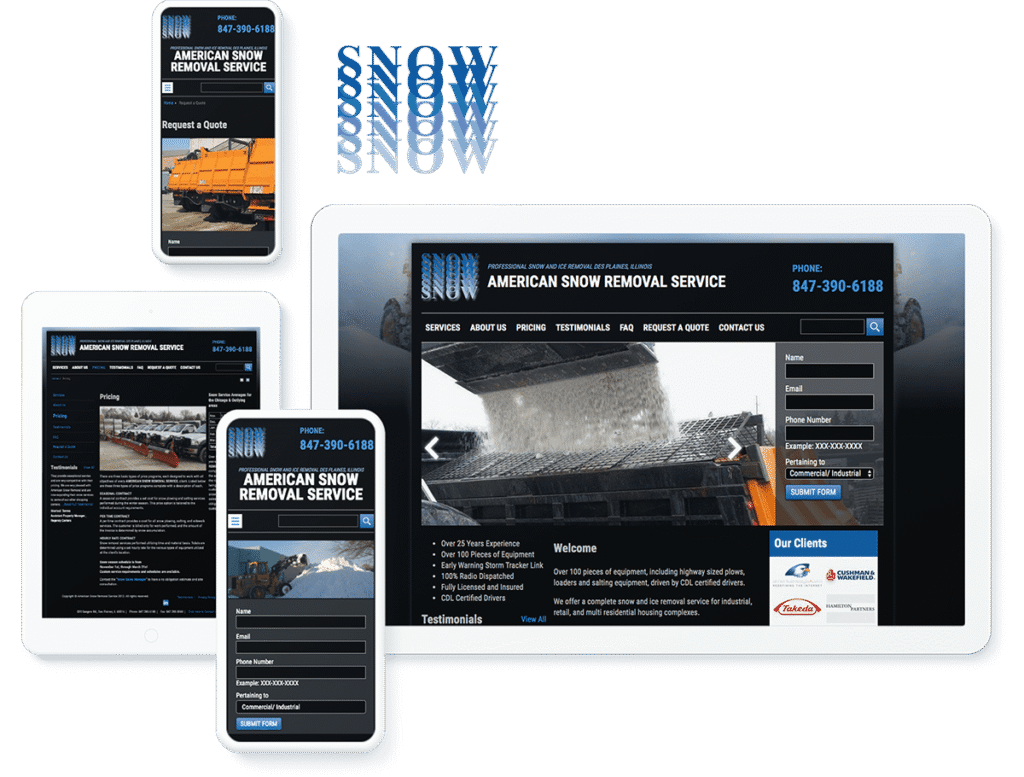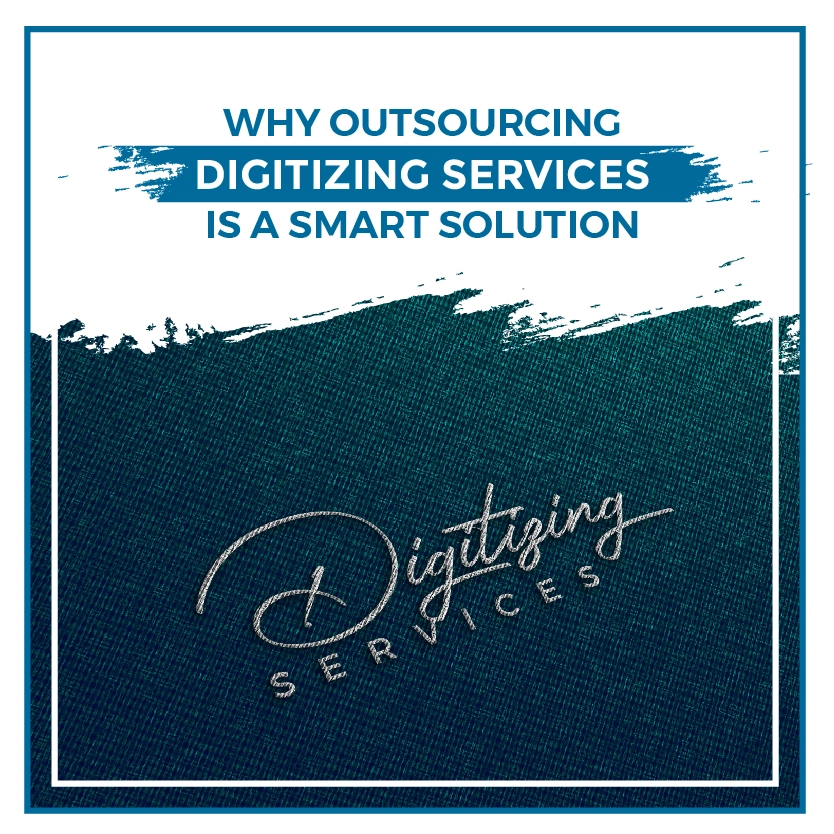Technology
The Hidden Cost of Ugly: How Bad Design Kills Trust (and How Professional Web Design in Columbia, SC Saves It)

I’ve been in this business for close to two decades now, and if there’s one thing that still makes me want to scream into a throw pillow gently, it’s the persistent underestimation of web design. Some folks still think design is just about choosing fonts and adding a slider at the top that makes you seasick. And look — I get it. When you’re a business owner juggling 19 things before your second cup of coffee, you don’t wake up thinking, “What’s the emotional tone of my hero image today?”
But here’s the kicker: the first 0.05 seconds of someone visiting your site is all about design. Not the content. Not the price. Just pure visual judgment. According to a global study published in the Journal of Behavior & Information Technology, users form an opinion about your site in 50 milliseconds. That’s faster than the average human blink. And once that trust is lost — say, because your site looks like it time-traveled from 2009 — regaining it will be good luck.
In Columbia, South Carolina, I’ve seen it happen again and again. A poor website often hinders a great business. And it’s not just an aesthetic problem — it’s a trust problem. That’s where Web Design Columbia (WDC) comes in, armed with pixel-perfect judgment and a deep understanding of what makes people click, convert, and come back.
The Science of Distrust: What Bad Design Signals to Real Humans
Let’s get into the weeds for a second. When your website loads and visitors see Comic Sans headlines, images that don’t scale on mobile, or navigation menus with more items than a Cheesecake Factory menu, their subconscious starts firing off warning signals. These warning signals are not just guesses. They’re rooted in psychological studies. A study from Stanford’s Persuasive Technology Lab found that 75% of users make judgments about a company’s credibility based solely on its web design.
And yet, I still get calls from folks asking, “Can’t I just use the free version of a template and call it a day?” You can, but you’ll end up paying in a currency called lost trust.
Ironically, some businesses in Columbia don’t realize they’re sending the digital equivalent of showing up to a job interview in stained pajamas. The worst part? Many people are unaware of it because their competitors’ sites are equally outdated. However, customers notice, especially in a world where big brands are cultivating users to expect seamless, aesthetically pleasing experiences.
Professional Web Design in Columbia, SC: It’s a Trust-Building Machine
This is why professional web design in Columbia, SC, is no longer a luxury or some hipster aesthetic obsession. It’s table stakes. At WDC, we’ve built enough websites to know the nuances that can make or break a visitor’s experience, especially when you’re trying to capture attention in less time than it takes to skip a YouTube ad.
One of our recent clients — a law firm with impeccable credentials but a clunky, outdated website — saw a 42% drop in bounce rate within the first month of launch after we gave their digital presence a much-needed refresh. We didn’t even overhaul the content—just the structure, layout, typography, and loading speed. The design told the story of professionalism before anyone had a chance to read their about page.
And we didn’t charge a Silicon Valley premium for it, either.
The Global Benchmark: What Design Trends Are Telling Us
Let’s zoom out. Globally, design is in flux. Websites are becoming more adaptive, emotionally resonant, and AI-friendly. Google’s shift to Search Generative Experience (SGE) and the rise of multimodal AI tools like ChatGPT-4o mean your site doesn’t just have to look good — it needs to be structured semantically, optimized for machine interpretation, and lightning-fast.
And here’s a hot fact that should make any business owner sit up straighter: according to Adobe’s global design trends report, 38% of people will stop engaging with a website if the layout is unattractive. That’s not a gentle nudge — that’s an exit.
As someone who’s seen design phases come and go — from brutalist layouts to parallax scrolling, to the current obsession with neumorphism (which, by the way, isn’t very accessible) — I can tell you this: the trend that never goes out of style is clarity. Professional design is about conveying confidence without appearing overly polished. In Columbia, we design for the scroll, not the show-off.
What Big Brands Get Right (and Sometimes So Wrong)

Let’s look at Apple for a second. Their design philosophy is worshipped worldwide. But even they slip. Remember the Butterfly keyboard fiasco? Sleek and minimal, yes — but functional? Not quite. The web has its own version of this. Many well-funded startups have websites that win design awards but confuse users to no end. Uber redesigned their entire brand in 2018 and lost so much recognition that it had to walk it back in 2021.
And that’s another edge of professional web design in Columbia, SC — we aren’t designing to win design awards in Berlin. We’re planning to help Columbia businesses connect with real people who don’t care if your button shadows are “brutalist” or “glassmorphic” — they just want to find what they came for.
WDC’s approach is grounded in this practicality. We use tools like Figma and Adobe Firefly not just for visual polish but for innovative collaboration, accessibility checks, and performance forecasting. And we’re constantly testing in real environments — not just a designer’s 5K monitor.
The Downsides of Going DIY (or Trusting That Cousin Who “Knows Wix”)
Now, don’t get me wrong, platforms like Wix and Squarespace have democratized web design in a big way — and that’s great. But their limitations become clear fast, especially for growing businesses. You end up boxed in, SEO-handicapped, and constantly hitting a ceiling when it comes to performance.
Global complaints about DIY platforms often center on code bloat, poor SEO control, and design limitations that force every website into a cookie-cutter mold. A report from Search Engine Journal notes that websites built on drag-and-drop builders are often 40–60% slower than their optimized custom counterparts.
In Columbia, I’ve had more than one business come to us after months of frustration with a templated builder. They saved a few hundred upfront but lost thousands in customer confusion and digital invisibility.
That’s the gap professional web design in Columbia, SC fills — creating a tailored, optimized, fast-loading experience that doesn’t rely on “hope” as a strategy.
Why Design Is a Feeling Before It’s a Function

I’ll wrap this first half with a truth that’s taken me almost 20 years to grasp fully: people don’t just interact with websites — they feel them. A clean layout isn’t just easier on the eyes; it tells your customer, “We’ve got our act together.” A slow, cluttered site says, “We may cut corners.”
The beauty of Web Design Columbia (WDC) lies in our ability to design for both the logic and the vibe. Our sites don’t just pass SEO audits and speed tests. They pass the most critical test of all: Would you trust this business with your money?
And when someone finds us through a branded link like webdesigncolumbia.us, they’re often surprised by two things: how affordable our prices are, and how much thought we put into every pixel.
Emotional Design: Why It’s Not Just for Luxury Brands Anymore
Somewhere along the way, emotional design became a buzzword — a sort of fancy way to describe websites that made people feel “warm fuzzies.” But here’s the truth: emotional design is unavoidable. Every website evokes an emotion, even if that emotion is frustration, confusion, or “Where’s the damn contact button?”
Big brands like Airbnb and Duolingo invest millions in enhancing their emotional user experience (UX). Not because it’s cute, but because it works. Airbnb’s soft color palette, human-centric photography, and inviting microcopy (“Welcome home”) increase booking trust, which in turn boosts conversions. Duolingo’s little green owl has been meme’d into oblivion, but behind the scenes, their user flows are rooted in pure behavioral psychology.
At Web Design Columbia, we’ve seen firsthand how professional web design in Columbia, SC, can incorporate emotional UX without adopting the entire Silicon Valley approach. A local wellness brand we worked with wanted more user engagement but had a cold, technical design language. We rebuilt their interface to feel like a conversation, not a lecture. Sign-ups increased by 73% over a six-week period. Turns out, feelings matter — even in form fields.
Mobile-First Isn’t Optional Anymore — But It Still Gets Screwed Up
Now let’s talk about mobile. The phrase “mobile-first” is like avocado toast at this point — everyone says they like it, but a lot of people are still getting it wrong.
Globally, over 58% of web traffic is generated from mobile devices, according to Statista. In the U.S., mobile users expect fast-loading, finger-friendly, intuitive designs. But what do they often get instead? Desktop layouts shrunk down to the size of a Triscuit.
I once audited a Columbia-based restaurant website (not a client yet, don’t worry) that had a scrolling image slider on mobile, with no text, no call to action, and loading times so slow you could marinate a steak while waiting. That’s not mobile-first. That’s mobile-forgotten.
Professional web design in Columbia, SC, isn’t just about responsive breakpoints — it’s about designing for the smallest screen first, then scaling up. At WDC, we prototype in mobile view to ensure essential content never gets buried. We also factor in tap targets, page weight, and whether grandma on her Galaxy A13 can find your hours without rage-quitting.
And no, mobile optimization isn’t expensive if you start smart. It’s costly when you ignore it and lose business.
The Tools That Shape the Invisible
Behind every slick website is a suite of tools most users will never see, but they make all the difference. Let’s break it down, no bullet lists needed.
We use Figma as if it were a religion. Not because it’s trendy, but because real-time collaboration reduces project misfires by about 60%. Designers, developers, and clients stay on the same page — literally.
For asset generation and ideation, Adobe Firefly has become surprisingly helpful. While generative design still has rough edges (AI still struggles with fingers and footers), Firefly helps us move faster, especially when clients don’t have high-res imagery or specific brand guidelines.
Then there’s PageSpeed Insights, Cloudflare, and the invisible frameworks that control how fast and secure your site feels. Most of our Columbia-based projects run on performance-optimized stacks, and we fine-tune everything to the last byte. Speed matters. People bail after just 3 seconds of load time — and not just millennials. Grandma’s not waiting either.
But here’s where it gets even more interesting: some tools hurt more than they help. Tools like Elementor or Divi, popular with DIYers, often inject bloated code and unnecessary CSS files. Globally, developers complain that these platforms prioritize short-term ease over long-term speed issues.
At WDC, we ditch those shortcuts. We know what makes a site fast, secure, and search-ready. And no, we’re not keeping those secrets — you can ask us anything. We like educated clients.
Real-World Optimizations You Never Think About (But Should)
Let’s examine a few subtle design optimizations that may seem small but have a significant impact.
We once increased engagement for a Columbia-based tutoring service simply by adjusting the typography hierarchy, making the call-to-action bold, and eliminating unnecessary font styles. No redesign, no new colors. Just better focus.
Another time, we helped a South Carolina landscaping company increase quote requests by 30% simply by moving the phone number above the fold and making it tap-to-call on mobile. Sounds obvious? It wasn’t — they’d been missing out on dozens of leads every month.
Professional web design in Columbia, SC, when done right, isn’t flashy — it’s thoughtful. These changes are invisible to most users, but they reduce friction, increase trust, and enable businesses to grow without needing to seek attention constantly.
The Real Cost of Cutting Corners
Here’s the painful part no one wants to hear: bad design costs. And not just in SEO rankings or bounce rates.
A 2023 Forrester report found that every dollar invested in UX yields a $100 return. That’s not a typo. The math is often hidden in reduced support calls, increased conversions, and brand equity that makes someone choose you over the guy down the street.
Yet in Columbia, I still meet smart business owners who think a $300 site from their nephew with a YouTube diploma will “do the trick.” It won’t. You’ll eventually call a professional — and probably spend double fixing what should’ve been done right the first time.
WDC isn’t the cheapest agency in the country — but we’re far from the most expensive. What we offer is nearly 20 years of hard-won experience, local understanding, and a process that’s made to be painless. We don’t outsource. We don’t overpromise. And we never ghost you after the final invoice is sent.
We just deliver professional web design in Columbia, SC that works like it should — fast, secure, elegant, and rooted in reality.
Websites Are Quiet Salespeople — Train Them Well
Your website is your best employee. It works 24/7, doesn’t call in sick, and greets every visitor with a (hopefully) polished smile. But like any employee, it only performs well if you train it right.
At Web Design Columbia, we don’t just design websites. We shape digital ambassadors — quiet, tireless extensions of your brand that make great first impressions and even better second ones.
If you’re still relying on outdated templates, slow builders, or a site that “kind of works,” I encourage you to rethink your approach. Start small, even. Get an audit. Ask hard questions. And visit us at webdesigncolumbia.us when you’re ready.
Because when it comes to trust, you only get one shot, and your design fires the first bullet.
Technology
“Indian Textiles: History, Techniques, and the Timeless Art of Handwoven Fabrics”

Introduction
Indian textiles feel like a warm, living story. They carry color, skill, and decades of craft in each thread. When I touch a handwoven fabric, I sense a long heritage and careful hands. This article explores indian textiles in simple words. It will guide you through history, methods, materials, and ways to buy with care. You will meet techniques like ikat, block printing, and brocade. You will learn why artisans matter. I share small real-life notes from markets and craft villages. My goal is to make this topic clear and useful. Read on to find tips, facts, and friendly advice about indian textiles you can use right away.
A Short History of Indian Textiles
India has woven cloth for thousands of years. Ancient traders shipped cotton and silk across seas. Textiles shaped local life and global trade. Cities like Varanasi, Kanchipuram, and Ahmedabad grew around looms. Kings and merchants funded designs and workshops. British rule changed the industry a lot. Handlooms lost some ground to mills. Yet rural weavers kept old methods alive. Independence revived interest in khadi and handcrafts. Today, indian textiles blend history and modern taste. Museums, family stories, and village workshops keep this memory. Each sari or shawl can tell a story about place, material, and the hands that made it.
Materials and Fibers: What Fabrics Tell Us
Materials make the first promise of a textile. Cotton is soft, cooling, and common in many regions. Silk brings sheen, strength, and festive value. Wool and pashmina offer warmth from Himalayan towns. Hemp and linen appear in some coastal areas. Modern blends add stretch and affordability. Natural fibers age well and breathe. They also accept natural dyes beautifully. The fiber guides care, price, and feel of the cloth. Look for labels and ask sellers about fiber content. A true cloth often has a small irregularity from handwork. These small flaws can be proof of authenticity and of the artisan’s involvement.
Famous Weaving Centers and Regional Styles
India’s regions each have a textile voice. Banaras is famous for brocade saris with gold zari. Kanchipuram produces heavy silk for weddings. Bengal is known for soft cotton and jamdani weave. Assam offers muga and eri silk with subtle shine. Gujarat and Rajasthan excel in bandhani, ajrakh, and bold block prints. Andhra and Telangana are home to vibrant ikat and pochampally weaves. Chanderi from Madhya Pradesh brings light silk-cotton blends. Each center shaped local patterns and techniques. When you buy a product, the place of origin often tells its method. Knowing this helps you recognize authentic work and appreciate regional craft identities.
Iconic Techniques and What Makes Them Special
A few techniques define the magic of indian textiles. Ikat ties yarns before dyeing to make blurred designs. Bandhani uses tiny tie-dye dots to form patterns. Kalamkari hand-paints or block-prints designs on cotton. Block printing presses carved wooden blocks to stamp repeat motifs. Brocade uses extra threads like zari for rich patterns. Chikankari is delicate shadow-work embroidery from Lucknow. Ajrakh uses resist dyeing and natural indigo for deep blues and reds. Each method demands different tools and time. Many take days or weeks for one yard of fabric. These techniques give texture, history, and value to the final cloth.
The Role of Artisans and Handloom Communities
Artisans are the heartbeat of textile craft. Families often pass skills through generations. A master weaver might teach many helpers in the same workshop. Handloom communities live near rivers and markets for dye and fiber access. Their work is physical and precise. Loom setups and shuttle movements become muscle memory. Women and men play different roles in many crafts. Payments, seasonal work, and access to markets shape livelihoods. Fair pay and direct buying help preserve these communities. When we understand the artisan’s role, we make smarter buying choices. Supporting a craft means valuing the person behind each piece, not only the image it presents.
Dyeing, Natural Colors, and the Science Behind Them
Dyeing changes plain yarn into color and mood. Natural dyes come from plants, roots, and even insects. Indigo, turmeric, madder, and pomegranate are classic sources. Natural dyeing needs mordants to fix color to fiber. The process can take days of soaking and rinsing. Synthetic dyes grew popular for speed and uniformity. Yet natural dyes remain prized for depth and patina. They age gracefully and feel gentle on skin. Small variations in shade tell you the dyeing was likely done by hand. For sustainability, many craftsmen now mix old recipes with safer chemicals. Learning about dye choice helps shoppers pick fabrics that match personal values.
Indian Textiles and Sustainability: Challenges and Opportunities
Sustainability is a hot topic in textiles. Handloom work is often less energy-intensive than mill production. It can use natural fibers and low-tech dyeing. Yet artisans can face low wages and unstable demand. Fast fashion pressures small producers with cheaper alternatives. Waste and water pollution remain industry-wide problems. But ethical fashion brands and cooperatives are changing the scene. Many groups certify fair wages and traceable supply chains. Revival of khadi and slow-fashion movements boosts artisan incomes. Repaired and recycled textiles also extend life cycles. If consumers choose well, they can push the market toward fair and green practices.
Care, Authenticity, and Buying Guide
Knowing care rules helps fabric last longer. Cotton can be machine-washed on gentle cycles. Silk likes cool washes and careful drying. Wool often needs hand-washing or dry cleaning. Always read care labels and test a small fold before washing. To spot authentic work, look for small irregularities and finished edges. Ask about the loom and dyeing process if you can. Check for regional tags or crafts council certificates. When possible, meet the seller or artisan. Buying directly from cooperatives or trusted stores reduces middlemen. Finally, buy only what you love. A well-chosen piece stays in your wardrobe and reduces waste.
Indian Textiles in Modern Fashion and Global Markets
Modern designers blend heritage with new shapes. Runways borrow motifs from ikat and kalamkari. Streetwear reuses old saris into jackets and bags. Global stores source handloom fabrics for capsule collections. This trend widens markets for artisans. But it can also blur origin and credit for designs. Proper attribution and fair contracts matter. Brands that invest in craft training and fair pay build long-term value. Export demand helps small weaving towns. Yet local markets remain vital for steady income. When buyers insist on traceability, the whole chain improves. Fashion can be a powerful ally for living crafts when done ethically.
Stories from the Loom: Personal Notes and Case Studies
I once visited a small weaver’s home near a river. The loom filled the room with soft clacks and rhythmic motion. A grandmother taught two young apprentices the same pattern. They laughed while explaining dye recipes and warp counts. A single sari there took nearly a week to finish. The family sold some pieces in a nearby city and kept others for family use. That moment showed me how textiles are woven into daily life. Stories like this repeat across India. They remind us a textile is more than matter. It is memory, time, and a careful set of decisions from tree to thread.
How to Support Artisans and Preserve Craft
Supporting artisans goes beyond buying a product. Buy fewer items and buy quality. Seek direct links to craft collectives and fair trade groups. Learn about the technique and ask questions at markets. Share authentic pieces on social media with credit to the maker. Repair and alter old textiles instead of discarding them. Gift handloom items to encourage demand. Consider volunteering or donating to craft preservation programs. When possible, push brands to disclose supply chains. Each small action helps maintain skilled livelihoods. Preserving craft keeps stories and regional identities alive for future generations.
Conclusion: Why Indian Textiles Matter Today
Indian textiles carry history, skill, and sustainable promise. They connect local lives to global trends. When you choose a handloom piece, you support people and places. You also keep alive techniques that take time and care. Learning how to recognize true craft makes your purchase meaningful. Ask questions, read labels, and prefer transparent sellers. Share what you learn with friends and family. Small choices add up and protect heritage. I hope this guide helps you see the value of indian textiles. Treat them well, and they will tell their story for years to come.
FAQs
1) What makes a handloom textile different from mill-made cloth?
Handloom textiles are woven using manual or semi-manual looms. A weaver controls every pick and pass. The work often shows slight irregularities in weave and pattern. These marks are signs of human effort. Mill-made cloth uses power looms and machines. Machines give uniformity and speed. Handloom products often require more time to make. They use traditional skills and local designs. This can make them more valuable and unique. Handloom items may need gentle care and occasional repairs. Buying direct from cooperatives helps ensure fair pay for the weavers. Look for craft labels or ask sellers for origin details.
2) How can I verify the authenticity of an indian textiles piece?
Start by checking the feel and finish. Handcrafted pieces often have small, natural irregularities. Look at the selvedge and knotting for handwork signs. Ask about the place of origin and the craft technique. Trusted shops may provide craft council or cooperative tags. Seek photos of the workshop or artisan when possible. Compare prices—extremely low prices can signal mass production or imitation. Test a small hidden area for color fastness before washing. Finally, buy from shops or platforms that clearly describe the supply chain. These steps reduce the chance of buying a mislabelled item.
3) Are natural dyes better than synthetic dyes?
Natural dyes come from plants, minerals, and insects. They often feel softer and age naturally. Some people prefer them for skin sensitivity and ecological reasons. Natural dyes can fade gently, which many find beautiful. Synthetic dyes are cheaper and more color-fast. They enabled broader, affordable production in modern times. However, some synthetic processes may use harmful chemicals. The best choice depends on values and use. If you care about ecology and tradition, prefer natural-dyed indian textiles. If you need very bright, fast colors, a responsibly managed synthetic dyeing process could be acceptable.
4) How should I wash and store silk and brocade garments?
Silk and brocade need gentle handling. Check care labels first. For many silks, hand wash in cool water with mild soap. Avoid wringing or hot water. Lay flat to dry in shade to prevent fading. Brocade with zari or metallic threads often needs dry cleaning. Store these garments in breathable cotton bags to avoid moisture. Keep them away from direct sunlight to protect colors and gold thread. Use tissue paper between folds to prevent creases. Refresh occasionally by airing in shade. Proper care will keep these delicate indian textiles looking rich for years.
5) Can indian textiles be a sustainable wardrobe choice?
Yes, they can be. Handloom work often uses natural fibers and low-energy methods. Crafted pieces are designed for long-term use. Choosing repairable, high-quality cloth reduces waste. Support brands that pay fair wages and use transparent supply chains. Avoid single-use fashion and cheap imitations. Reusing and upcycling old indian textiles gives them new life. However, sustainability depends on production choices. Check for responsible dyeing, minimal waste, and fair labor practices. A mindful purchase can help the environment and support artisan communities.
6) Where can I buy authentic indian textiles without overpaying?
Look for certified cooperatives, craft bazaars, and local artisan groups. Many government and NGO platforms list verified sellers. Visit artisan clusters or regional markets if you can. Boutique stores that work directly with weavers often offer fair prices. Online platforms can help, but check seller transparency. Ask about origin, technique, and supporting documentation. Compare prices across sellers to understand market range. Remember that paying a fair price helps artisans continue their craft. A reasonable investment today keeps the skill alive for tomorrow.
Technology
Secret Websites: Hidden Gems, Safe Browsing, and How to Find Private Online Spaces

Introduction
The internet holds many small corners that most people never see. Some pages hide in plain sight. People often call these hidden places secret websites. Many are helpful, legal, and safe. This guide will explain what secret websites are and how to explore them with care. You will learn simple steps to find useful pages. You will also learn to spot scams and keep your data safe. The goal is to help you discover useful sites without risk. Read at your own pace and try the small tips. They work for hobby searches and for study.
What exactly are secret websites?
When people say a site is secret, they usually mean it is not easy to find. A site may be unlinked from other pages or tucked behind a form or password. It could also be a tiny personal project or a niche archive. Many of these are built by a single person or a small team. They often serve a narrow topic or a clear task. Calling a page a secret helps describe low-traffic or non-indexed web corners. Remember, the label secret is about visibility. It does not mean illegal.
Why people hunt for secret websites
Curiosity pushes many people to seek hidden pages. Researchers look for old reports and rare data. Creators seek quiet spaces to test ideas. Students look for sources the big sites miss. Hobbyists like odd tools that do one thing well. Some users want ad-free, low-distraction pages. Finding these pages can feel like a small treasure hunt. One link can lead to many helpful resources. Small wins keep people exploring and learning. That is why secret websites attract hobbyists and learners.
Types of secret websites and what they offer
Hidden pages come in many forms. Some are archives of old books or scanned papers. Some are tiny web apps made to solve one job. There are private blogs and small forums with few visitors. Artists and experimental coders host playful projects that few people see. Some pages live behind logins for closed groups. Each type serves a clear need. A tiny tool might help you write faster. An archive can hold rare texts. Knowing the type helps you choose how to use it and how to judge trust.
How to find secret websites without risky tools
You do not need special or risky software to find many hidden pages. Start with curated lists and hobby newsletters that collect niche links. Search code hosting sites for “awesome” lists that point to projects. Use simple search operators like quotes and site: to narrow results. Check web archives for older versions of pages that have been removed. Ask hobby groups for recommendations. Take small, careful steps and avoid unknown downloads. These methods reveal many secret websites safely and reliably.
Good examples to try right now
Many lesser-known sites offer real value. Look for digital archives that host public-domain books and old scans. Try soundscape projects that loop coffee shop noise or gentle rain for focus. Window-view projects show short clips or photos from distant places. Tiny writing and art tools spark creativity in a few clicks. Some sites host small educational games and utilities. Most of these projects aim to teach or delight. They are safe and legal. These secret websites add quiet joy or useful tools to your browsing.
How to judge trust and avoid scams
Trust signals are simple to check. Look for HTTPS to protect data in transit. Check for a clear about page or contact info. Search for the site name on blogs or forums to see what others say. Check domain age when that info is available. Avoid pages that nag you to download files or that ask for too much data up front. Read a few comments or mentions before you trust a source. If a page feels pushy or strange, close the tab and move on. These checks help you spot unsafe secret websites.
Simple privacy steps before you click a link
Before you visit a new page, set simple safety habits. Keep your browser and security software up to date. Use an ad or tracker blocker to stop many scripts. Use private browsing when you do not want history saved. Clear cookies when you test new pages. Never type bank or identity details into a form on an unknown page. Avoid random file downloads. Small habits keep your device and data safer while exploring secret websites and niche tools.
Deep web, dark web, and where hidden pages live
The deep web includes many private pages like email and bank portals. The dark web is a smaller and different corner that often needs special software. Most helpful hidden pages live on the public web or on parts of the deep web that do not require special tools. They are just obscure or lightly linked. The dark web often hosts illegal markets and high-risk content. Most people do not need to go there. For safe discovery, focus on public hidden pages and curated lists that point to legal resources.
If you want to make a private site of your own
Making a private page is common for drafts and small teams. Use passwords or private sharing links to limit access. Add a ‘noindex’ meta tag to discourage search engines. Use a robots.txt file to guide crawlers. Host drafts in cloud folders with sharing turned off. Consider a simple login system for group work. These steps keep your drafts and notes off public indexes. Many creators hide pages while they edit. Later, you can remove restrictions when you want a wider audience.
Where to find curated lists and trusted communities
Curated lists save time and point to vetted gems. Look for “awesome” lists on code hosts and in public repositories. Subscribe to newsletters that gather niche finds. Join small hobby forums and groups where people swap links. Many communities vet new links before they post them. Respect rules and say thanks to curators who maintain lists. Active, kind groups keep quality high. Curated lists and communities are the main route to good secret websites for most people.
Search operators and simple techniques that help discovery
Search operators are handy when used slowly. Put phrases in quotes to force exact matches. Use a minus sign to remove unwanted results. Try site: to limit results to one domain. Add filetype:pdf for documents and reports. Check cached and archived copies to view removed pages. Combine these techniques and refine your terms. Practice small queries and follow links one step at a time. These simple tricks help you find focused content without any risky software.
Practical examples of fun hidden gems
A few tiny projects show how charming hidden web corners can be. Soundscape pages loop rain or cafe noise. Window-view projects show short scenes from other cities. Tiny art sites host playful browser toys. Old text archives let you read public-domain books with few distractions. Short writing prompt tools jumpstart creative flow. These small pages are often built by a single maker. They spread by word of mouth and by curated lists. They make good starting points for exploring the web’s quieter corners.
Legal and ethical red flags to avoid
Watch for requests for money with little proof. Avoid pages that demand identity info for trivial tasks. Beware of sites offering illegal downloads or cracked software. Many scams try to look helpful while asking for payment or personal data. Also watch for poor grammar, many popups, and aggressive ad behavior. If a site has no contact details, be cautious. When in doubt, ask a trusted community or step away. Spotting red flags protects you from bad secret websites and scams.
How communities help keep hidden corners safe
Communities play a big role in web safety. Users report scams and mark bad links. Curators remove spam and keep lists clean. Rules and moderators protect members from abuse. When people share verified finds, the whole group benefits. Thank curators who do steady work. Join groups that practice good moderation and clear posting rules. Community care helps many secret websites stay useful and safe for new visitors and long-term users.
The future: search, AI, and private web corners
Search engines and AI will change how we find content. AI may surface useful, lesser-known pages more often. That could make more secret websites easier to find. At the same time, new privacy tools may help people shield content from broad indexing. Human curation will likely stay important for quality. For now, patient searches and trusted lists remain a strong way to find useful hidden pages. Keep learning and adapt as tools change.
FAQ — Are hidden pages illegal or unsafe?
Most hidden pages are legal and safe. The term hidden only means less visible or less linked. Illegal sites do exist, but they are a small subset. If a page asks you to break the law, stop and report it. Use common-sense checks like HTTPS, contact info, and community mentions. Learn the rules for your country and follow safe browsing habits.
FAQ — How do hidden pages differ from the dark web?
They are not the same. The dark web needs special software and hides identities. Many useful hidden pages do not need those tools. Most are simply obscure public web pages or archives. For everyday needs, focus on legal public resources and curated lists rather than the dark web.
FAQ — How can I tell if a hidden page is safe?
Check for HTTPS and an about page. Search for the site name in forums or blogs. Avoid downloads from unknown sources. Use tracker blockers and private browsing while you test a new page. Do not enter sensitive info into forms on untrusted sites. Small checks keep you safer online.
FAQ — Can hidden pages track me?
Yes. Any page can use cookies, trackers, or scripts to track visitors. Use tracker blockers or private browsing to reduce tracking. Clear cookies often and avoid sharing personal data on untrusted forms. These habits lower your exposure to tracking.
FAQ — What is one quick trick to find rare pages?
Use a precise phrase in quotes and add terms like archive or resource. Narrow the search with site: or filetype: to find focused content. Then follow links slowly and bookmark good finds. Patience is more useful than speed when hunting for rare pages.
FAQ — Should I share a great hidden find with others?
Share within trusted circles and respect any site rules. If a page is meant for a small group, ask permission. If it is public, sharing helps creators and improves curation. Be kind and clear when you post a link, and note any access limits.
Final thoughts and next steps
Hidden pages can teach and delight when you explore with care. Use simple checks and privacy habits. Follow trusted communities and curated lists. Bookmark and label useful finds for later. Most hidden pages are legal, creative, and full of value. Explore slowly, learn something new, and share responsibly with friends and groups you trust.
Technology
Who You Are: Understanding Your True Self

Introduction
In today’s fast-paced world, many people feel lost or unsure about who they are. Understanding yourself goes beyond knowing your name or your profession it’s about discovering your values, beliefs, strengths, weaknesses, and passions. Knowing who you are allows you to make better decisions, build meaningful relationships, and live a fulfilling life.
Why Understanding Who You Are Matters
Understanding who you are is crucial because it shapes your choices. When you know your core values, you can make decisions that align with your true self instead of trying to fit into someone else’s expectations. For example, someone who values creativity may feel unfulfilled working in a strict corporate environment. By understanding your personality and motivations, you can find paths that feel authentic and satisfying.
Self-awareness also improves relationships. When you understand your emotions and behaviors, you communicate more effectively and build stronger connections with others. It also helps you identify toxic influences and environments, allowing you to focus on people and situations that genuinely support your growth.
Exploring Your Values and Beliefs
Your values and beliefs are a core part of who you are. They guide your actions and decisions. To explore them, start by asking yourself questions like:
-
What do I care about most in life?
-
Which principles can I never compromise on?
-
How do I define success and happiness?
Reflecting on these questions helps clarify your priorities. Journaling or talking to trusted friends can also reveal patterns in your thoughts and choices that reflect your true self.
Understanding Your Strengths and Weaknesses
Everyone has unique talents and weaknesses. Discovering your strengths empowers you to leverage them in your personal and professional life. At the same time, knowing your weaknesses helps you grow and avoid pitfalls. Techniques like personality tests, feedback from colleagues or friends, and honest self-reflection can reveal hidden abilities and areas needing improvement.
Being aware of your strengths and weaknesses doesn’t mean limiting yourself it’s about understanding your potential and accepting areas for growth. When you embrace both, you create a balanced self-image.
Identifying Your Passions and Interests
Your passions are clues to who you are at your core. Activities that energize you or bring joy often reflect your authentic self. Whether it’s art, technology, helping others, or exploring new ideas, identifying your interests allows you to design a life filled with purpose.
Try experimenting with new hobbies, volunteering, or exploring different career paths. Notice which activities make you lose track of time or leave you feeling excited. These moments are windows into your true self.
The Role of Self-Reflection
Self-reflection is a powerful tool for understanding who you are. Taking time regularly to think about your experiences, decisions, and emotions allows you to notice patterns and gain insights. Meditation, journaling, or simply quiet contemplation can help you connect with your inner self.
Self-reflection also encourages personal growth. When you examine past mistakes and successes, you learn valuable lessons that help shape your future choices. Over time, this practice strengthens your self-awareness and confidence.
Embracing Change and Growth
Remember, discovering who you are is an ongoing journey. People change over time, and so do their values, interests, and perspectives. Being flexible and open to change is part of understanding yourself. Growth often comes from stepping out of your comfort zone, trying new experiences, and embracing challenges.
Accepting that change is natural allows you to adapt without losing sight of your authentic self. Each experience teaches you more about your strengths, passions, and limits.
Living Authentically
Ultimately, knowing who you are is about living authentically. It means making choices that reflect your true self rather than conforming to outside pressures. Living authentically brings fulfillment, reduces stress, and strengthens your self-confidence. It allows you to show up fully in your relationships, work, and personal goals.
Start by setting boundaries, expressing your opinions honestly, and pursuing activities that bring you joy. Every small decision aligned with your true self reinforces a deeper understanding of who you are.
Conclusion
Understanding who you are is more than self-knowledge it’s the foundation of a meaningful life. By exploring your values, strengths, weaknesses, and passions, and practicing self-reflection, you can uncover your authentic self. Embrace growth, accept change, and live authentically to experience the full potential of your life.
-

 Technology3 years ago
Technology3 years agoIs Camegle Legit Or A Scam?
-

 Travel3 years ago
Travel3 years agoNEW ZEALAND VISA FOR ISRAELI AND NORWEGIAN CITIZENS
-

 Uncategorized3 years ago
Uncategorized3 years agoAMERICAN VISA FOR NORWEGIAN AND JAPANESE CITIZENS
-

 Fashion12 months ago
Fashion12 months agoGoda Perfume Reviews: Is It Worth Your Investment?
-

 Health3 years ago
Health3 years agoHealth Benefits Of Watermelon
-

 Home Improvement7 months ago
Home Improvement7 months agoArtificial Grass Designs: Perfect Solutions for Urban Backyards
-

 Technology3 years ago
Technology3 years agoRNDcoin: Korea’s first blockchain project and a world-class cryptocurrency
-

 Fashion2 years ago
Fashion2 years agoBest Essentials Hoodies For Cold Weather
















